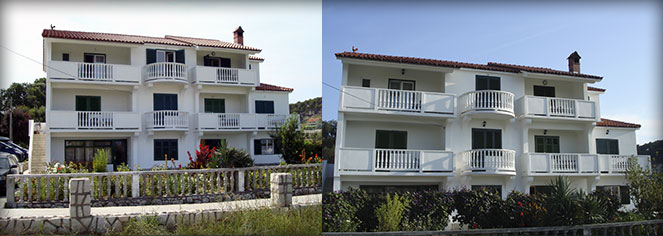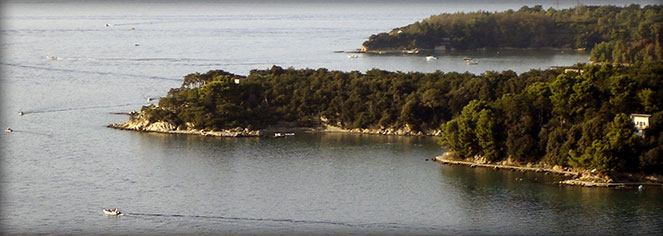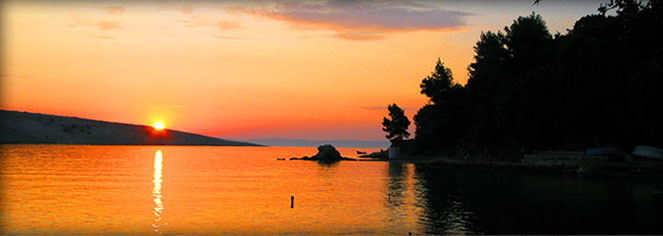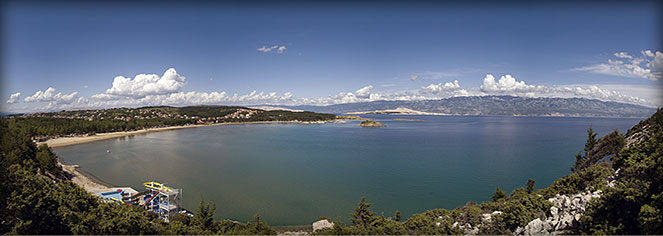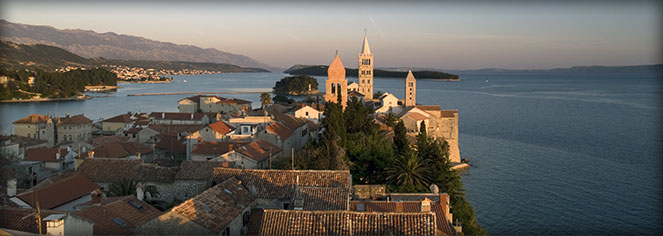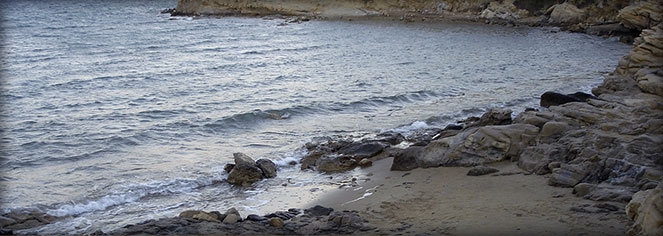 The Island of Rab - is a part of the island archipelagos of the Kvarner bay in the Adriatic Sea. Except for the old town of Rab, there are seven more places on the island (Barbat, Banjol, Palit, Kampor, Mundanije, Supetarska Draga and Lopar).
The Island of Rab - is a part of the island archipelagos of the Kvarner bay in the Adriatic Sea. Except for the old town of Rab, there are seven more places on the island (Barbat, Banjol, Palit, Kampor, Mundanije, Supetarska Draga and Lopar).
- the island has approximately 10000 inhabitants who live mostly of agriculture, fishing and tourism
- because of the Mediterranean climate with warm summers and mild winters, the island is a habitat of many plant and animal species
- turbulent history, various historical periods from the prehistory to the present have left their traces in many town remains, buildings, emblems and churches
- widely known because of its luxurious vegetation, clean sea, beautiful beaches and a thousand years old culture, Rab has always been an ideal place for holidays
- in 1936 it was visited by English king Edward VIII who got permission from the town authorities to bathe naked in one of the Rab bays and thus entered the naturism history of Rab
 Lopar is a picturesque place on the northwest part of the island of Rab. The first written data can be found in works of ancient writers. The place is known because of its beautiful beaches. There are 22 of them, and 3 of them are nudist (Ciganka, Sahara, Stolac).
Lopar is a picturesque place on the northwest part of the island of Rab. The first written data can be found in works of ancient writers. The place is known because of its beautiful beaches. There are 22 of them, and 3 of them are nudist (Ciganka, Sahara, Stolac).
The whole northern part of Lopar is protected area because of its features, geomorphologic characteristics and historical remains. Because of the clean sea, mild climate and God given beauty, it is one of the most popular summer resorts.
 A typical medieval centre with four imposing bell towers. Rab was a Roman settlement. Emperor Octavian August gave Rab the status of town and declared it a municipium 10 years BC. Rab is one of the oldest towns among Adriatic. The town is characterised by three longitudinal streets (Upper, Middle and Lower) which are connected with many alleys. In that part of the town, there are many precious monuments from the church and secular life. One of the most significant Rab monuments is The St. Mary’s Church from the twelfth century. It was built in the Romanesque style as a three-nave basilica with three apses. The church choir, which is made of chestnut wood, is especially attractive. It is made by local craftsmen. The St. Mary’s Church self-standing bell tower with its composition represents the most beautiful example of that kind of creation in our area. The St. Mary’s bell tower, the St. Andrew’s bell tower (which is the oldest on the island), the St. Justine’s bell tower (the youngest bell tower on the island) and the St. John Evangelist’s bell tower make a recognizable image of Rab.
A typical medieval centre with four imposing bell towers. Rab was a Roman settlement. Emperor Octavian August gave Rab the status of town and declared it a municipium 10 years BC. Rab is one of the oldest towns among Adriatic. The town is characterised by three longitudinal streets (Upper, Middle and Lower) which are connected with many alleys. In that part of the town, there are many precious monuments from the church and secular life. One of the most significant Rab monuments is The St. Mary’s Church from the twelfth century. It was built in the Romanesque style as a three-nave basilica with three apses. The church choir, which is made of chestnut wood, is especially attractive. It is made by local craftsmen. The St. Mary’s Church self-standing bell tower with its composition represents the most beautiful example of that kind of creation in our area. The St. Mary’s bell tower, the St. Andrew’s bell tower (which is the oldest on the island), the St. Justine’s bell tower (the youngest bell tower on the island) and the St. John Evangelist’s bell tower make a recognizable image of Rab.
One of the most significant Rab monuments is Knežev dvor (“Ducal Palace”). It is a group of palaces dominated by a tower with beautiful windows which date from the late Gothic and Renaissance. In the town of Rab are series of significant portals, balconies, beautiful windows, important inscriptions from different eras whose beauty won’t leave anybody indifferent.

